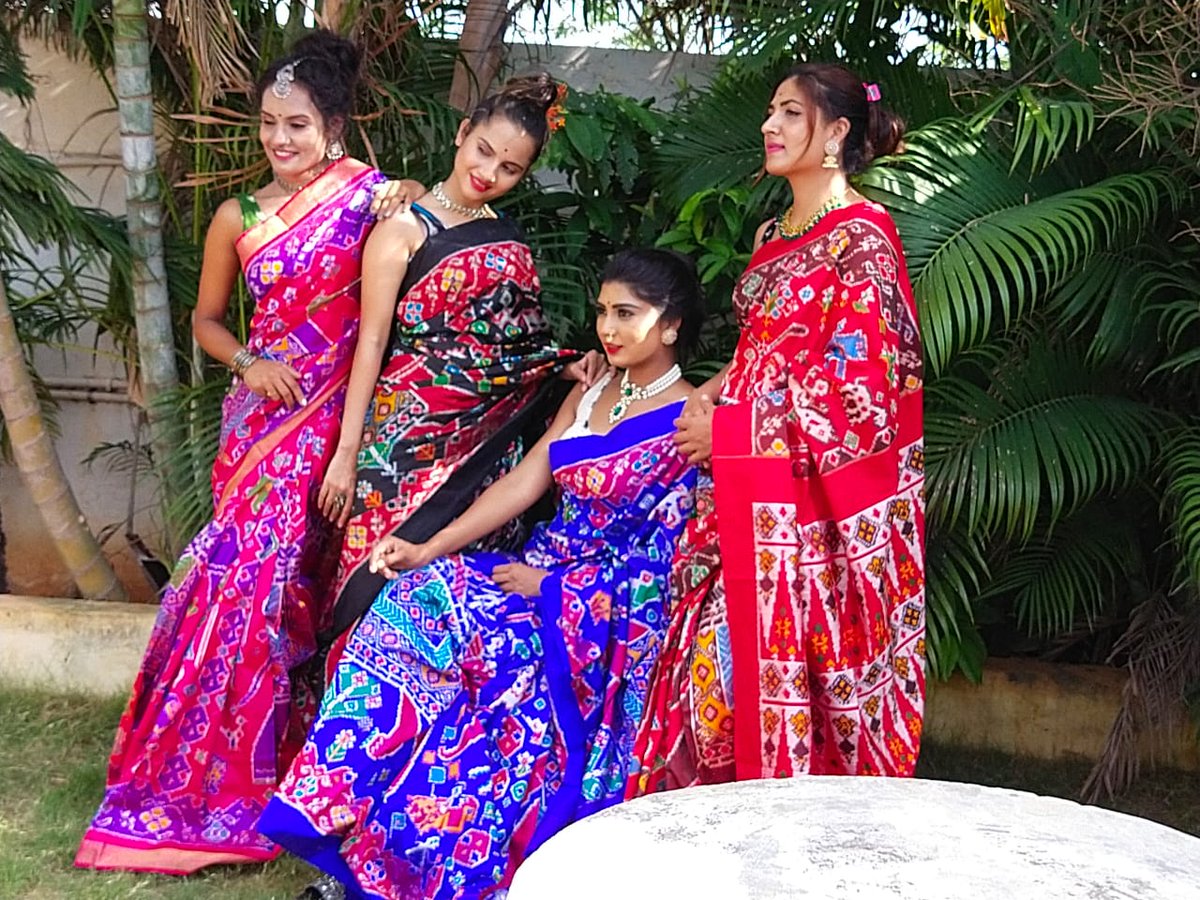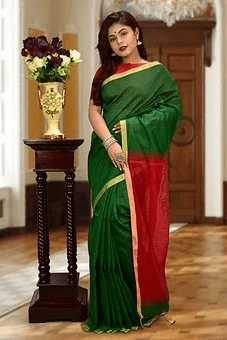Table of Contents
The beautiful pochampally sarees are a trademark of India’s pride and vibrancy, perfectly encapsulating the country’s rich and diverse culture. The art of making pochampally Ikat goes back all the way to 1950, in a small town called Bhoodan Pochampally, located in the state of Telangana.
These sarees are popular globally and the vibrant, bold designs have an irresistible allure to them. Women, especially in South India, are drawn naturally to these pochampally sarees, for they exude power and confidence. However, its ability to adapt to modern styles and create authentic fusion sarees is what draws young women across the country and the world.
History of Pochampally Saree
According to sources, the head of the Pochampally village was tasked with creating weaves of cotton along in silk sarees. This was done originally to save costs and boost profits. However, it began to quickly spread to neighboring villages and towns.
The traditional weaving technique used in pochampally Ikat was brought from a town known as Chirala, where the art was given the name of “Chit-ki”. Many weavers across the country learned this art and inherited the secrets of this technique, and went on to implement these secrets in their work.
By the year 1999, the weaving method was spread to all corners of India, and left over ten thousand families spread across hundred villages with this knowledge. The entire process of Ikat weaving became much easier due to this and was made cost-effective due to industrial efforts.
Because of the popularity the pochampally sarees have seen in the last few decades alone, this style of traditional south Indian sarees has transcended all barriers of location and culture.
What started almost a century ago in a small village in India, has now become an evergreen symbol for beautiful, intricate weaving across the country.
Types of Pochampally Ikat
The pochampally ikat is popularly known as Buddabhashi, Pogudubandhu, or Chitki in Telangana. Across the country, however, the broad and common name for this saree is Pochampally. You can notice two main types of Ikat:
Warp or Single Ikat: This is a tie and dye method in which only the warp of the saree is dyed. The weft is woven after the warp has been dyed, and maybe dyed with a single color or may have no color. In this type of Pochampally, there is a lot of attention to patterns, which are visible on the warp even before it is woven. The warp yarn used could be made of silk, jute, cotton, or other compatible fibers.
Ikat dyed silk warp and undyed cotton weft: Weft Ikat is a dyeing method where dye patterns are noticed on the weft yards used to weave the saree. The ikat patterns are visible but the weaving process is extremely time-consuming and requires precision.
Double Ikat: In these types of sarees, both the warp and the weft undergo resist-dyeing, and are then woven into a single cloth. This is one of the most difficult types of the weaving process and is thus also the most expensive. However, the patterns noticed on the saree are majestic and attention-grabbing, making women naturally fall in love!
When buying Pochampally sarees, ensure that you buy from a store that has proof of registration for the fabric. This proves that the store is selling you authentic sarees. As we mentioned, these sarees represent generations of culture and tell a compelling story. This is why we urge every Indian woman to buy one, if not more, of these majestic sarees and feel the connection to their roots!
Which state is famous for Pochampally sarees?
Telangana is famous for Pochampally Sarees
What is the cost of Pochampally sarees?
Pochampally sarees PRICE start from Rs. 400 to Rs. 6000 and more.
Related searches:
pochampally sarees history
pochampally ikat history
pochampally sarees origin
pochampally sarees information
pochampally weaving method
What are the steps of weaving Pochampally sarees?
What is the difference between Ikkat and pochampally?




